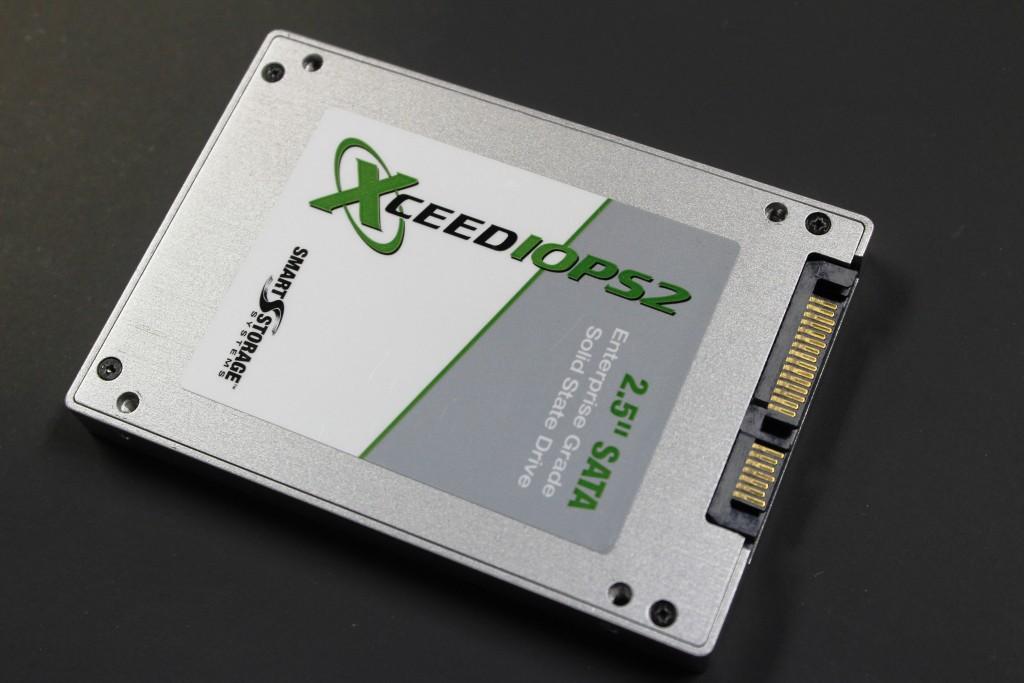24nm Toggle is hot these days. From the Plextor M3P to the SanDisk Extreme and all points in between, 24nm Toggle from Toshiba is a performance favorite.
When we looked at SMART’s XceedIOPS2 earlier this year, the potent combination of enterprise-class SF-2582 controller and 32nm Toshiba eMLC did not disappoint. But in keeping with the times, SMART has seen fit to drop in newer, more power-efficient 2xnm flash in place of the power hungry 3xnm eMLC.
SMART has since switched endurance metrics, but each 24nm equipped XceedIOPS2 should be good for 7 drive-writes-per-day (DWPD). The 32nm versions were rated at 1.5 PBW petabytes-written over the service life of the drive (per 100GB of capacity). In contrast, the Serial Attached SCSI flagship Optimus line of enterprise SSDs is good for 10 to 50 drive-writes-per-day, depending on the model.
Performance should be similar to the older 32nm version, with sequential throughput of 520MB/s , 60,000 4K read IOPS, and 40,000 write IOPS on offer. The Xceed2 ships in 28% over-provisioned capacities of 50GB, 100GB, 200GB, and 400GB (in 2.5″ and 1.8″ form factors). The same power-loss-protection and endurance-enhancing intellectual property are still there too.
24nm Toggle can be much faster in some circumstances, but lower power consumption and heat are some good reasons to switch from the 3xnm stuff too — realistically, it’s lower prices that are probably the prime motivator here. Industry transitions to smaller NAND geometry usually results in lower prices over time, but during the switch from 3xnm to 2xnm prices were initially higher for 2xnm drives. Years later, it’s late enough in the 2xnm cycle that cheaper, higher quality eMLC and SLC become more financially attractive. And lower prices are certainly more attractive.
 The SSD Review The Worlds Dedicated SSD Education and Review Resource |
The SSD Review The Worlds Dedicated SSD Education and Review Resource | 
